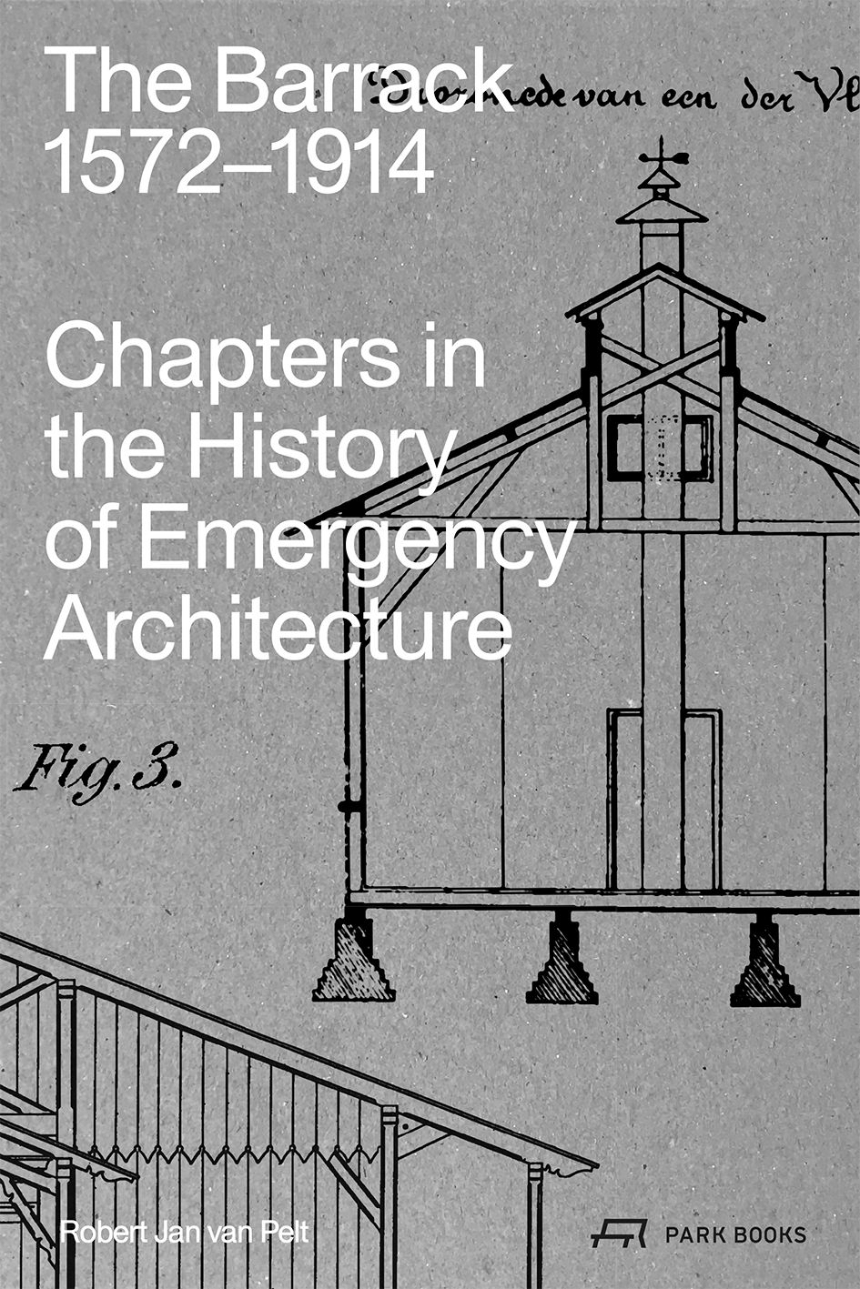The shifting meanings, from practical to tragic, associated with the structure of a barrack.
The Barrack, 1572–1914 tells the little-known history of a building type that many people used to register as an alien interloper in conventionally built-up areas. The barrack is a mostly lightweight construction, a hybrid between a shack, tent, and traditional building. Easy to erect and to take down, it is—after the introduction of railways and later motor vehicles in the late 19th and early 20th centuries—also easy to transplant from one location to another. Originating as a standardized accommodation for semi-permanent military encampments in the late sixteenth century, the barrack became a mass-produced utility of military and civilian mobilization in the nineteenth century, providing immediate shelter for soldiers, prisoners, or displaced persons, as well as well-ventilated hospital wards for the sick. The barrack played a decisive role in shaping the political space of modernity.
In The Barrack, 1572–1914, Robert Jan van Pelt traces nearly 350 years of barrack history up to 1914. That year, in which the Great War broke out, proved to be a turning point in the perception of the barrack, away from pragmatic emergency shelter and towards sinister forced housing. Richly illustrated with two hundred and fifty images, van Pelt’s book records the traditions of barrack design and the technological inventiveness that went into it in the late nineteenth century.
The Barrack, 1572–1914 tells the little-known history of a building type that many people used to register as an alien interloper in conventionally built-up areas. The barrack is a mostly lightweight construction, a hybrid between a shack, tent, and traditional building. Easy to erect and to take down, it is—after the introduction of railways and later motor vehicles in the late 19th and early 20th centuries—also easy to transplant from one location to another. Originating as a standardized accommodation for semi-permanent military encampments in the late sixteenth century, the barrack became a mass-produced utility of military and civilian mobilization in the nineteenth century, providing immediate shelter for soldiers, prisoners, or displaced persons, as well as well-ventilated hospital wards for the sick. The barrack played a decisive role in shaping the political space of modernity.
In The Barrack, 1572–1914, Robert Jan van Pelt traces nearly 350 years of barrack history up to 1914. That year, in which the Great War broke out, proved to be a turning point in the perception of the barrack, away from pragmatic emergency shelter and towards sinister forced housing. Richly illustrated with two hundred and fifty images, van Pelt’s book records the traditions of barrack design and the technological inventiveness that went into it in the late nineteenth century.
528 pages | 239 color plates, 58 halftones | 6.3 x 9.45 | © 2024
Architecture: History of Architecture

